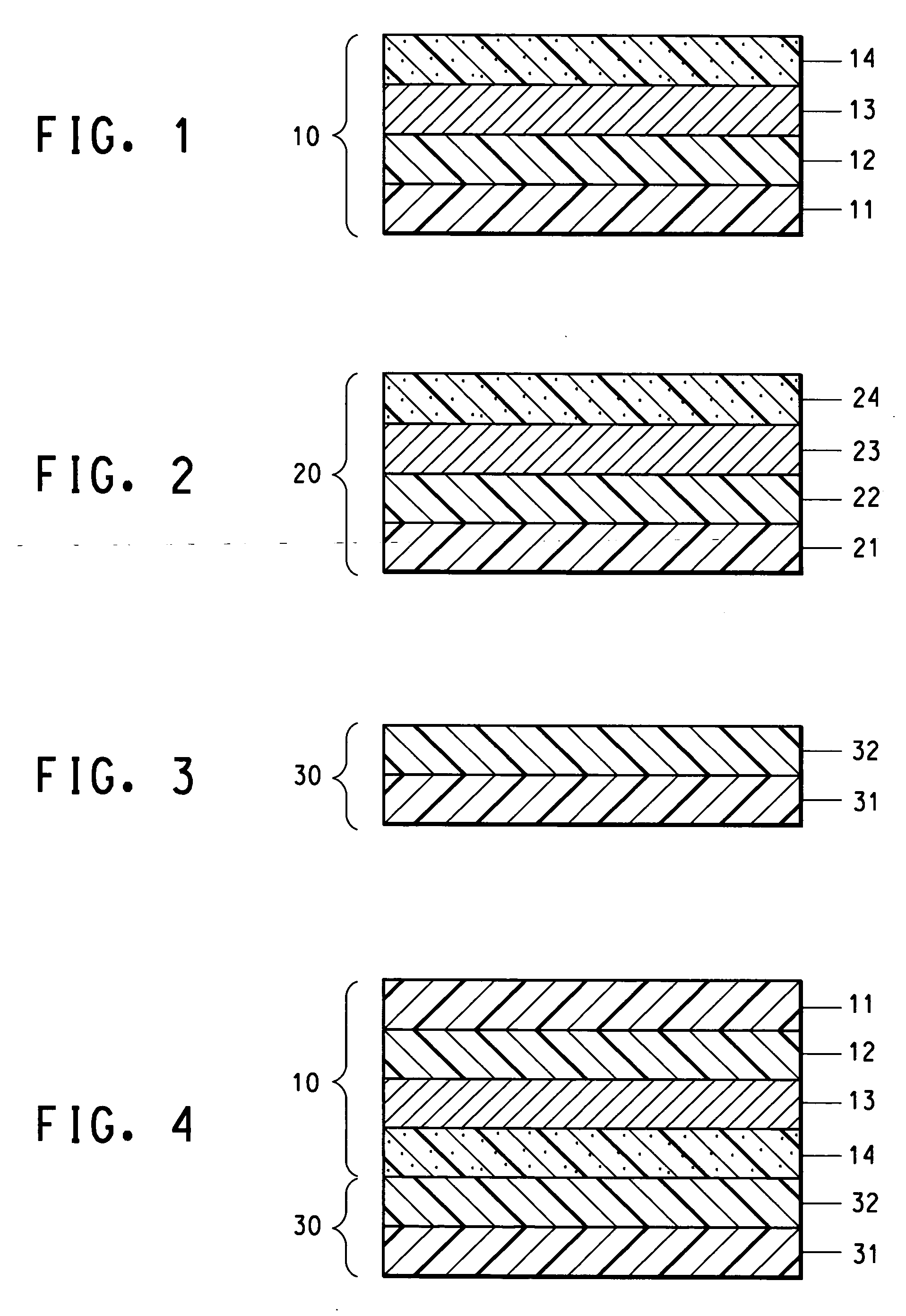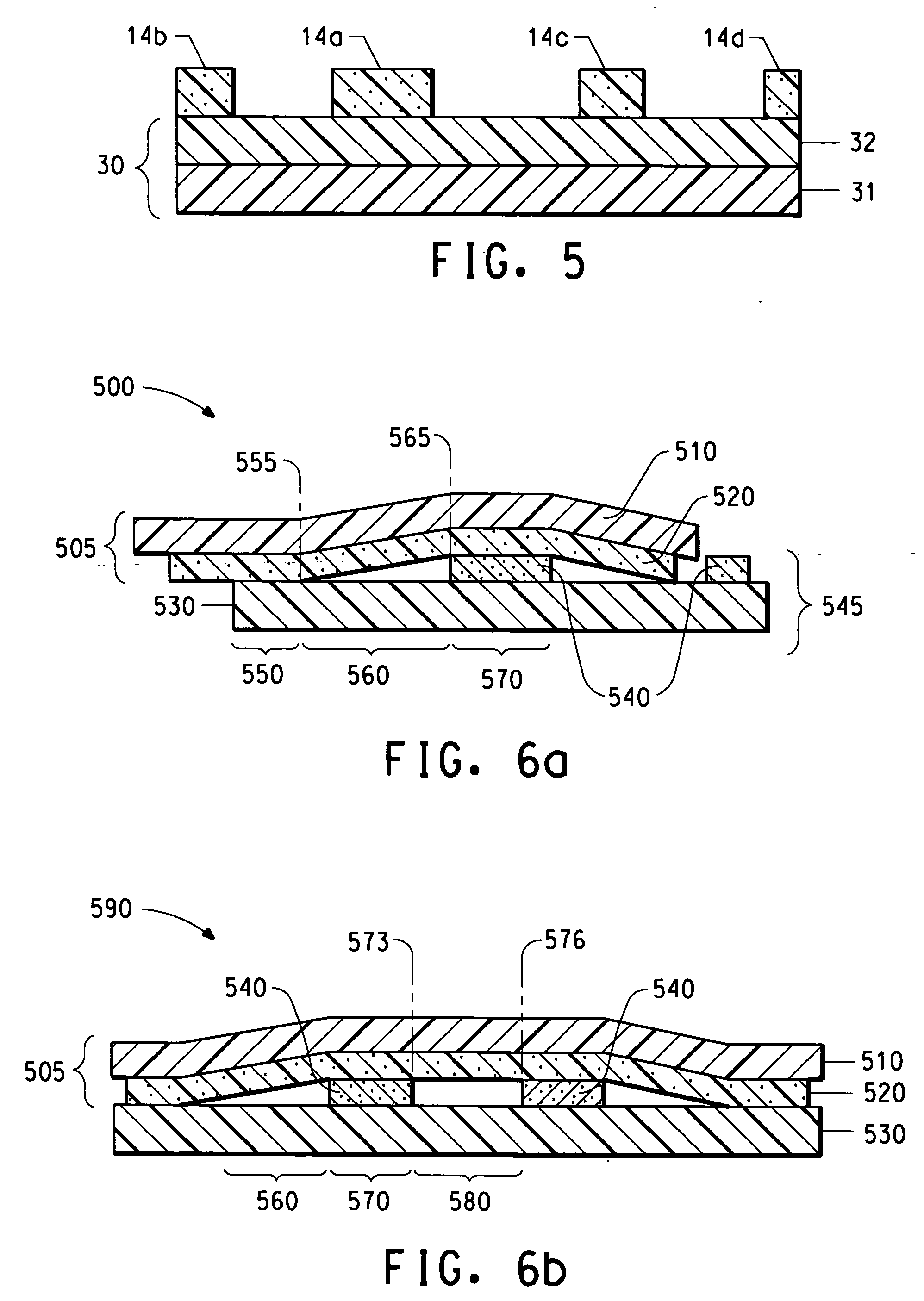Thermal imaging process and products made therefrom
- Summary
- Abstract
- Description
- Claims
- Application Information
AI Technical Summary
Benefits of technology
Problems solved by technology
Method used
Image
Examples
##ic example 2
PROPHETIC EXAMPLE 2
[0136] A color filter in accordance with this invention can be made using a texturing transfer of a texturing material according to a texturing pattern. One embodiment of a texturing pattern is designed to place texturing material into the vicinity of the thin film transistor area of a receiver element comprising Corning 1737glass with a chrome black mask as in Comparative Example 1A.
[0137] A first thin-film-transistor-area-partial-covering texturing pattern can comprise a pattern of 2,359,296identical square areas 27microns on each side, arranged in 3072columns of 768rows. The pitch of the rows would be 279 microns; the pitch of the columns would be 93 microns. The pattern would be exposed within the active area so that the leftmost column of the pattern abuts the leftmost edge of the active area, and the topmost edge of the top row of the pattern is 252 microns below the top edge of the active area. This pattern is intended to cover a square portion of the thin...
##ic example 3
PROPHETIC EXAMPLE 3
[0141] A color filter in accordance with this invention can be made using a texturing transfer of a texturing material according to a texturing pattern. One embodiment of a texturing pattern is designed to place texturing material into the vicinity of the thin film transistor area of a receiver element comprising Corning 1737glass with a organic black mask as in Comparative Example 1B, using only one third of the number of areas of the texturing pattern used in example 2.
[0142] A sparse first thin-film-transistor-area-partial-covering texturing pattern can comprise a pattern of 786,432 identical square areas 27microns on each side, arranged in 1024 columns of 768rows. The pitch of the rows and the columns would be 279 microns.
[0143] Other than the sparse pattern to be used in Example 3 and the receiver element having an organic black mask instead of a chrome black mask, the example is identical to Example 2.
##ic example 4
PROPHETIC EXAMPLE 4
[0144] A color filter in accordance with this invention can be made using a texturing transfer of a texturing material according to a texturing pattern. One embodiment of a texturing pattern is designed to place texturing material into the designated window area of a receiver element comprising Corning 1737. The receiver element could optionally comprise a black mask, or a black mask could be added in a subsequent step, including an organic black mask being added in a thermal imaging step. This example starts with bare glass as in Comparative Example 1C, and adds an organic black mask after texturing and before the use of the three colored donor elements. The texturing donor material is transparent so that it has no positive or negative effect on the filtering properties of the final color filter, regardless of its presence or absence.
[0145] A window-occupying texturing pattern can comprise a pattern of 786,432identical rectangular areas 29 microns wide and 93 mi...
PUM
| Property | Measurement | Unit |
|---|---|---|
| Area | aaaaa | aaaaa |
| Transparency | aaaaa | aaaaa |
Abstract
Description
Claims
Application Information
 Login to View More
Login to View More - R&D
- Intellectual Property
- Life Sciences
- Materials
- Tech Scout
- Unparalleled Data Quality
- Higher Quality Content
- 60% Fewer Hallucinations
Browse by: Latest US Patents, China's latest patents, Technical Efficacy Thesaurus, Application Domain, Technology Topic, Popular Technical Reports.
© 2025 PatSnap. All rights reserved.Legal|Privacy policy|Modern Slavery Act Transparency Statement|Sitemap|About US| Contact US: help@patsnap.com



